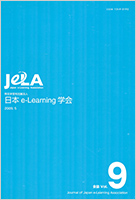9 巻
選択された号の論文の9件中1~9を表示しています
- |<
- <
- 1
- >
- >|
事例報告
-
2009 年 9 巻 p. 2-3
発行日: 2009年
公開日: 2020/08/21
PDF形式でダウンロード (310K) -
2009 年 9 巻 p. 4-9
発行日: 2009年
公開日: 2020/08/21
PDF形式でダウンロード (1553K) -
2009 年 9 巻 p. 18-26
発行日: 2009年
公開日: 2020/08/21
PDF形式でダウンロード (1744K) -
2009 年 9 巻 p. 36-44
発行日: 2009年
公開日: 2020/08/21
PDF形式でダウンロード (2275K) -
2009 年 9 巻 p. 45-54
発行日: 2009年
公開日: 2020/08/21
PDF形式でダウンロード (1844K) -
2009 年 9 巻 p. 55-63
発行日: 2009年
公開日: 2020/08/21
PDF形式でダウンロード (1740K) -
2009 年 9 巻 p. 109-120
発行日: 2009年
公開日: 2020/08/21
PDF形式でダウンロード (2676K) -
2009 年 9 巻 p. 129-135
発行日: 2009年
公開日: 2020/08/21
PDF形式でダウンロード (1258K) -
2009 年 9 巻 p. 143-148
発行日: 2009年
公開日: 2020/08/21
PDF形式でダウンロード (903K)
- |<
- <
- 1
- >
- >|
